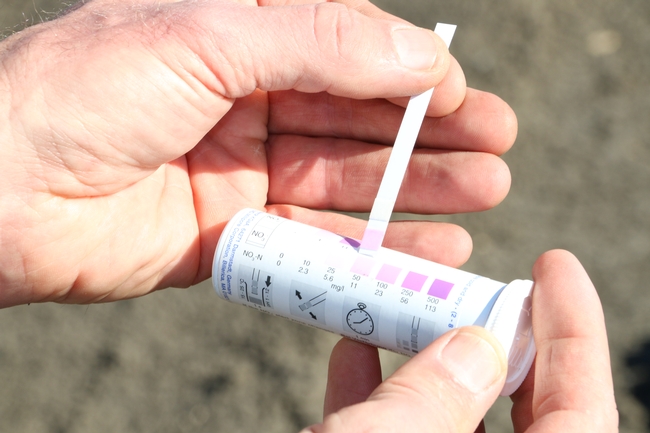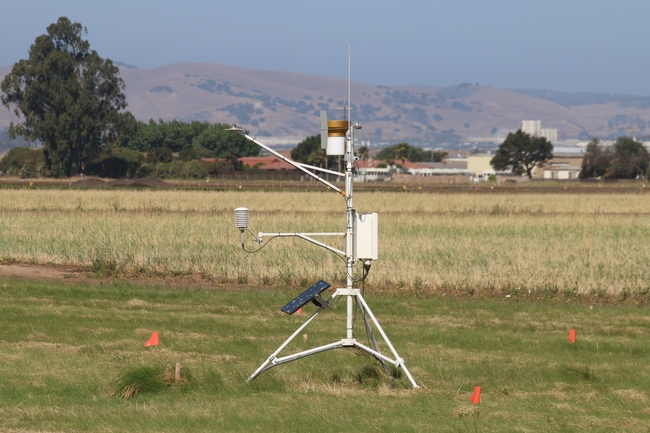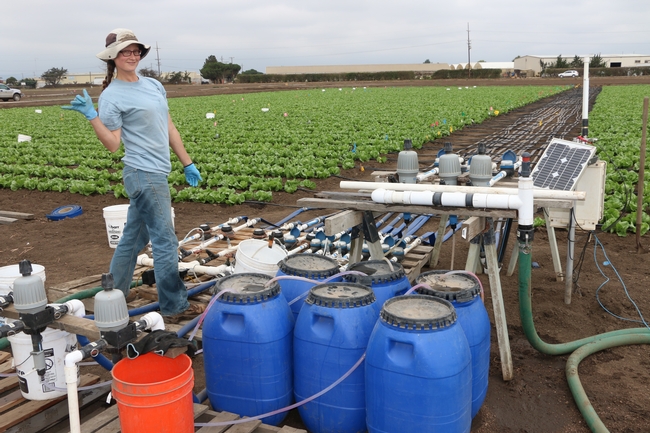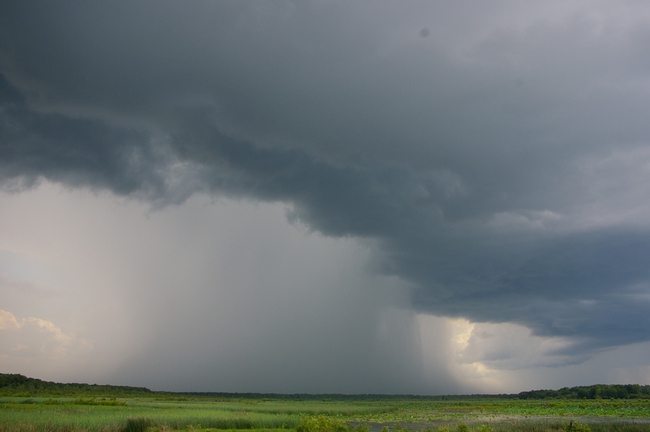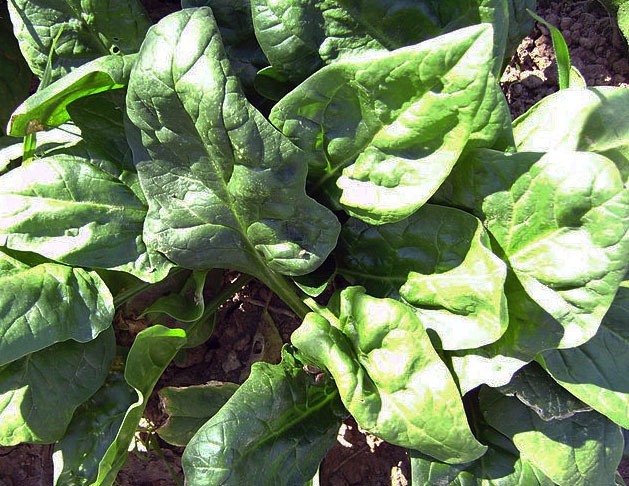Posts Tagged: Michael Cahn
California nitrogen assessment presents opportunities for improvement
Plants need nitrogen to grow, but excess nitrogen – from livestock facilities, septic systems, car exhaust and other sources – that escapes into groundwater and the air can impact the environment, human health and the climate.
A new report from the Agricultural Sustainability Institute at UC Davis offers a big picture look at the scale and impacts of nitrogen in California. According to the California Nitrogen Assessment, excess nitrogen in the state comes primarily from agriculture and fossil fuel combustion.
The report, published by UC Press, offers a scientific foundation to develop practices and policies that allow nitrogen's benefits while reducing the risk.
For years, UC Agriculture and Natural Resources scientists have been working with farmers throughout the state to refine fertilizer management, irrigation efficiency and other farming practices to manage nitrogen, and the work continues.
The following are some examples of UC ANR research and extension projects underway.
App helps farmers better manage nitrogen fertilizer and water
Growers can use CropManage, developed by Michael Cahn, UC Cooperative Extension advisor in Monterey County, and UC ANR Communication Services and IT staff, to track and manage water and nitrogen fertilizer applications for their crop fields. The online application can be used on mobile devices or computers to help farmers use two tools to conserve water and make better use of nitrogen fertilizer while maintaining crop productivity and quality. Growers use the soil nitrate quick test in the field to measure the nitrogen level of their soil and the app to determine the optimal level of nitrogen fertilizer to apply based on UC ANR research on crop nitrogen use. CropManage also recommends water needs of a crop from weather station data and crop development models.
Matching nitrogen applied to crop need improves efficiency
Richard Smith, UC Cooperative Extension advisor in Monterey County, is leading several research projects evaluating the nitrogen requirements of vegetables including including cole crops, spinach, baby lettuce, a salad mix and cilantro. Smith is evaluating crop rotations with broccoli to scavenge nitrogen from the soil profile. He is also evaluating slow-release fertilizers to minimize nitrate leaching losses in shallow-rooted crops such as baby lettuce and spinach in the Salinas Valley.
Wood chips remove nitrogen in tile drain water
Using wood chips and supplemental carbon sources, Tim Hartz, UC Cooperative Extension specialist in the UC Davis Department of Plant Sciences, worked with Cahn and Smith to refine a process to remove nitrate from tile drain water, which typically is very high in nitrate. The carbon in the wood chips supports the activity of anaerobic bacteria that chemically reduce the nitrate to N2, a benign gas.
Irrigation water fertilizes vegetables
Water quality regulations in many regions of California now require farmers to report the amount of nitrogen fertilizer that they apply to their fields and the nitrate concentration of their irrigation water. Smith, Hartz and Cahn have just finished three seasons of field trials that demonstrated that the nitrate in groundwater supplied a substantial portion of the fertilizer requirements for lettuce and broccoli. By accounting for the nitrate in irrigation water and using the soil nitrate quick test to monitor soil nitrogen levels, growers may be able to significantly reduce the amount of fertilizer nitrogen they apply to vegetable crops.
Micro-irrigation offers almond growers a tool to control leaching
The majority of almond growers apply fertilizer through micro-irrigation systems and an increasing number of growers are irrigating with water that is saline. Patrick Brown, professor in the UC Davis Department of Plant Sciences, is studying how to use micro-irrigation to reduce nitrate leaching and manage soil salinity by varying the frequency of irrigation and the length of time water is applied during irrigation.
Managing irrigation to reduce nitrate leaching
To identify the best irrigation management practices to control soil salinity and to minimize nitrate leaching to groundwater, Laosheng Wu, professor and UC Cooperative Extension specialist in the UC Riverside Department of Environmental Sciences, is using computer simulation to consider soil, water, crop nitrogen demand and fertilization with irrigation methods. In collaboration with UC Cooperative Extension advisors, Wu is conducting field experiments on alfalfa in Imperial County, almonds in the Central Valley and avocados at South Coast Research & Extension Center in Orange County to validate the simulations.
Online tool being developed to estimate soil nitrogen mineralization rates
To develop a tool for growers and crop advisers to estimate soil nitrogen, Daniel Geisseler, UC Cooperative Extension specialist in the Department of Land, Air, and Water Resources at UC Davis, is gathering data throughout California to estimate field-specific nitrogen mineralization rates. This project, funded by UC ANR's California Institute for Water Resources, will use nitrogen mineralization data to develop an online tool to help growers adjust their applications of fertilizer. The tool has the potential to increase nitrogen use efficiency in crop production, resulting in lower risks of nitrate leaching to groundwater.
Nitrogen management training for Certified Crop Advisers
Between 2014 and 2016, approximately 900 Certified Crop Advisers participated in a nitrogen management training program coordinated by UC ANR's California Institute for Water Resources with support from CDFA's Fertilizer Research and Education Program. The technical and applied training improves CCAs' understanding of sound nitrogen management practices to make informed recommendations to growers.
The California Nitrogen Assessment book
The book, “The California Nitrogen Assessment: Challenges and Solutions for People, Agriculture, and the Environment,” is available for purchase at ucpress.edu. The 20-page executive summary can be downloaded for free at asi.ucdavis.edu.
This story is also available in Spanish: "La evaluación del nitrógeno en California ofrece oportunidades para mejorar http://ucanr.edu/sites/Spanish/Noticias/boletines/?uid=6884&ds=199
El Niño isn't filling Monterey County lakes as quickly as other state reservoirs
Despite frequent rain since the New Year, the water levels in two Monterey County lakes aren't rebounding at the same rate as drought-stricken lakes in other parts of California, reported Ramin Skibba in the Monterey Herald.
In December, Lake Nacimiento was at 16 to 17 percent of capacity. It has now risen to 22 percent. Lake San Antonio, which dropped to 3 percent of capacity last summer, is still at 3 percent now. It is so low that engineers refer to it as a "dead pool" because gravity cannot pull water out of the reservoir when it is at that level.
The Monterey County lakes don't fill as quickly as other lakes - such as Shasta, Folsom and Oroville - because they are fed by relatively small watersheds. Nacimiento and San Antonio were built in the 1950s and '60s for flood control and to recharge aquifers. With dropping aquifer water levels, farmers have had problems with their wells, the story said.
“Some growers' wells pull in as much air as water, so that they need repairs or lose the wells entirely. I've seen well drillers around, which indicates re-drilling,” said Michael Cahn, a UC Agriculture and Natural Resources Cooperative Extension advisor in Monterey County. “This is a cost for agriculture.”
As they drill deeper, farmers also risk more seawater flooding in, contaminating the limited water supply. It was seawater intrusion that originally led to the construction of the Nacimiento and San Antonio dams.
Cahn was quoted at the end of the story with a positive message.
“The aquifers are currently at the lowest levels ever recorded, but they can go back up,” he said.
UC app helps growers monitor water and fertilizer use
A UC Agriculture and Natural Resources scientist will hold a workshop in April to teach farmers how to use an online application available free from UC ANR that calculates the precise water and fertilizer needs of their crops, reported the Salinas Californian.
CropManage compiles information about the crops' soil, growth and water needs from years of UC ANR Cooperative Extension Research, said Michael Cahn, UC ANR Cooperative Extension irrigation and water resources advisor in Monterey County.
"It's repackaging research into a format that's accessible to everybody," said Cahn, who developed the program."It takes 10 steps to do the calculations by hand and (CropManage) does it in a second."
Using CropManage helps farmers avoid wasting expensive fertilizer, reduces the likelihood fertilizer will leach into the groundwater, and makes efficient use of water, a factor that is increasingly important as the state struggles through what may be the fourth consecutive year of drought.
CropManage can currently be used for head and romaine lettuce, broccoli, cauliflower, cabbage and strawberries. It will expand to other crops in the future.
"We want to develop things carefully," Cahn said. "We're not trying to make money on this, we're just trying to help the growers."
The workshop will be from 8:30 a.m. to noon Thursday, April 2, at the Monterey County Agricultural Center Conference Room, 1432 Abbot St., Salinas. RSVP by email to Michael Cahn at mdcahn@ucanr.edu.
Online tool helps farmers make decisions that save water
Central Coast farmers can cut back irrigation water by 50 percent over the course of the lettuce or broccoli growing season and still harvest the same yield using an online decision tool developed by UC Cooperative Extension.
Michael Cahn, UCCE advisor in Monterey County, developed CropManage and is now conducting field trials comparing crop water use and nitrogen use under standard growing practices and the recommendations made by the web-based tool. So far, research results are in for lettuce and broccoli, showing dramatic reductions in both water and fertilizer use when the computer aids decisionmaking. Current crops supported by CropManage are romaine and iceberg lettuce, broccoli, cauliflower and cabbage. Additional crops will be added in the near future.
Cahn described and demonstrated the computer program in a 25-minute video that is part of the UC California Institute for Water Resources online video series. The series consists of presentations featuring UC and other experts speaking on topics aimed at helping farmers and all Californians better understand and cope with drought.
Very efficient use of water minimizes the amount of water that will leach below the crop's rootzone, where it can't be used by the plant and can contaminate the water table. Factors that must be considered in achieving such efficiency include the rooting depth of the crop, the plant's stage of growth, the amount of water stored in the soil, the irrigation system uniformity, the water application rate, the salinity in the water source and the weather.
“That requires a lot of calculations in developing irrigation scheduling,” Cahn said.
CropManage gathers much of the information and does the calculating for farmers. CropManage automatically pulls up weather data from weather stations operated by the California Department of Water Resources, soil data from the UC Davis Soil Web, and research data from UC Cooperative Extension. The farmer adds information about the crop, field, and type of irrigation system being used.
“The computer program takes this information and running it through models can make water and fertilizer recommendations,” Cahn said.
The system also stores all the data for farmers, allowing growers to track their practices and demonstrate they are managing nutrients and water efficiently.
View the 25-minute below:
UC Cooperative Extension advisors help spinach growers finesse fertilizer applications
UC Cooperative Extension advisors are studying the critical balance between fertilizer application and absorption in Salinas Valley spinach crops to help farmers meet new water regulations, reported Dennis Taylor in the Salinas Californian.
Richard Smith and Michael Cahn, UCCE advisors for Monterey and other Central Coast counties, have been conducting field trials for several years to determine volume data on fertilizer application. Once growers know exactly how much nitrogen their crop is absorbing, they can more precisely apply an appropriate amount.
Smith explained that baby spinach will absorb roughly 80 percent of the nitrogen it is going to take up in the final two weeks before harvest, making timing critical, Taylor reported. Spinach harvested a few days later, called "teen spinach" uses about 100 pounds of nitrogen per acre; larger-leafed spinach can used up to 120 pounds.
“No (previous) studies had evaluated high-density planting of clipped or bunched spinach grown on 80-inch beds,” said UCCE research assistant Aaron Heinrich. “Our study was specifically designed to provide data on the nitrogen uptake characteristics of spinach and to evaluate ways to improve nitrogen fertilizer management.”

